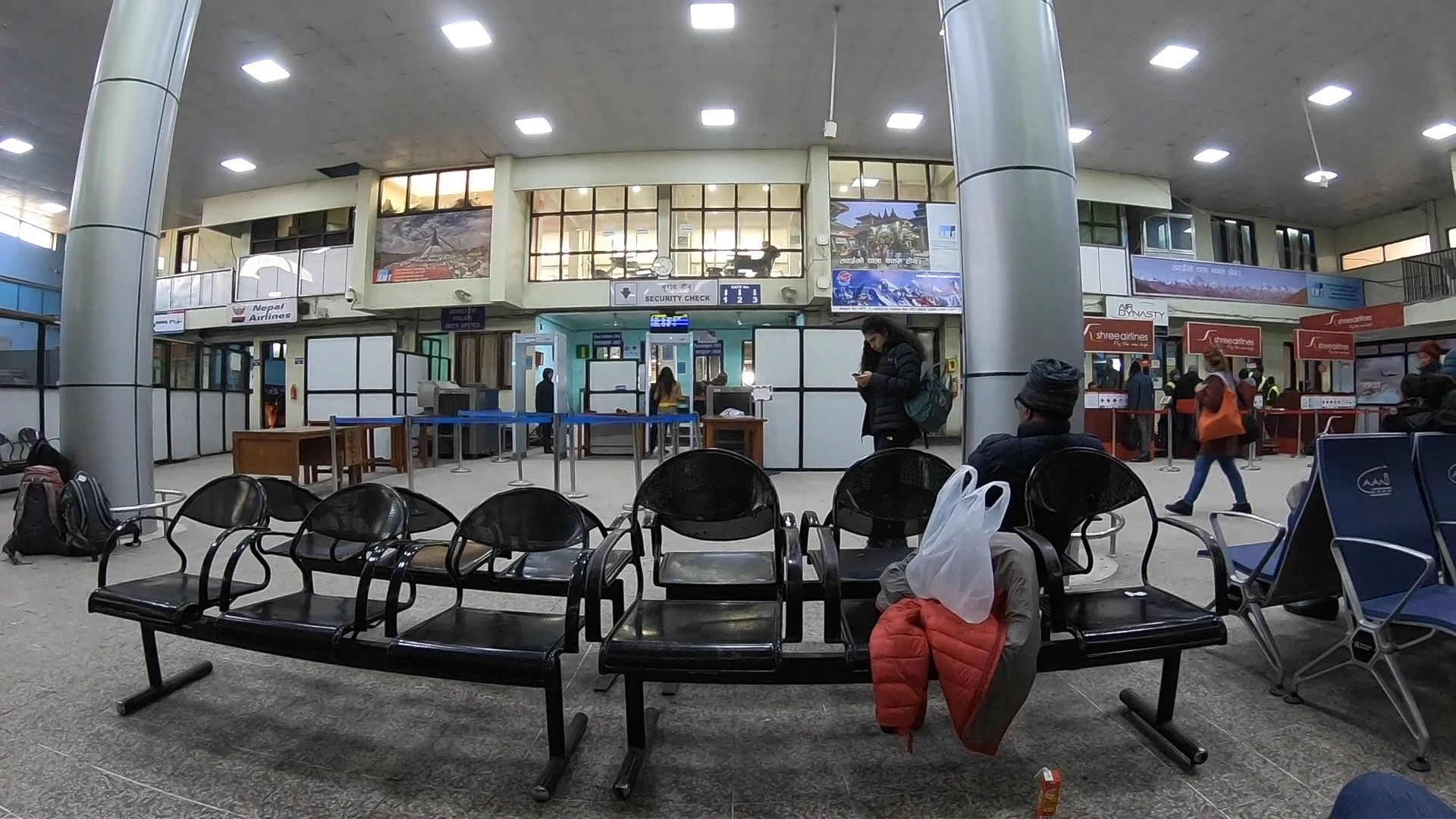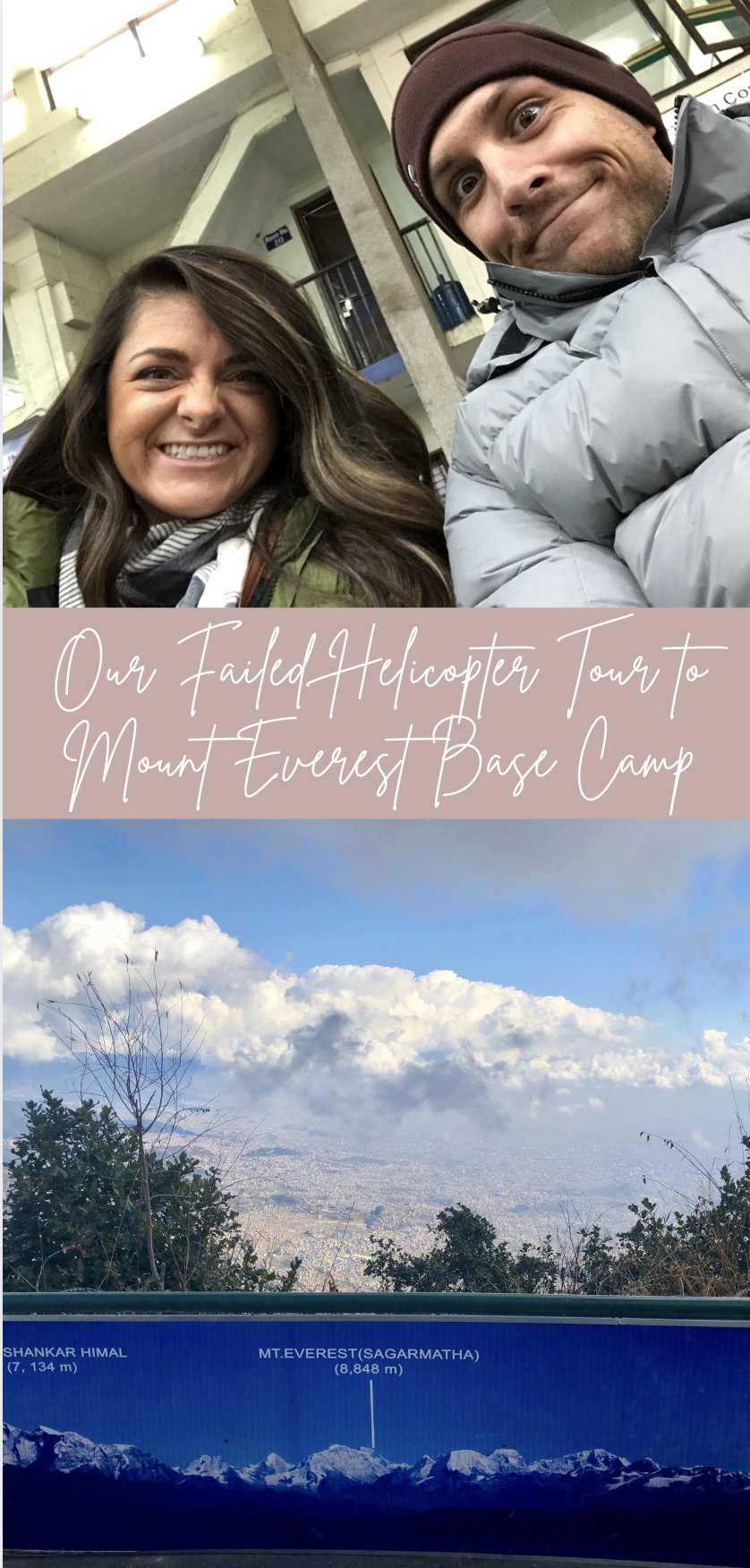Everest Base Camp Helicopter Tour Guide (and How Ours Failed!)
This post may contain affiliate links. If you purchase something through that link, I will make a small commission at no additional cost to you. Thanks for your continued support!
If trekking to Everest Base Camp for days through rugged Himalayan terrain isn’t your thing, but witnessing the majesty of Mount Everest still tops your bucket list, then a helicopter tour to Everest Base Camp might be your dream trip.
These flights offer awe-inspiring aerial views, unmatched convenience, and a chance to stand in the shadow of the world’s tallest mountain without weeks of hiking. They’re a favorite for thrill-seekers, photographers, and luxury travelers alike.
We visited Kathmandu, Nepal, at the tail end of our Southeast Asia trip to Thailand & Cambodia with one main goal: see Mount Everest with our own eyes. But thanks to unpredictable Himalayan weather, our dream flight didn’t take off. Here’s our story, plus the best times to visit, cost details, and travel tips to help you avoid our mistake.
Best Time for an Everest Base Camp Helicopter Tour
Timing is everything in the Himalayas. The earlier you fly in the day, the better your chances of clear skies and smooth conditions.
Spring (March–May)
Pros: Stable weather, clear skies, rhododendron blooms in the valleys.
Cons: Popular season, so expect higher prices and more bookings.
Autumn (September–November)
Pros: Post-monsoon clarity, crisp views, minimal rainfall.
Cons: Cold mornings at higher elevations.
Avoid:
Monsoon (June–August): Cloud cover, poor visibility, frequent cancellations.
Winter (December–February): Snowstorms, freezing temps, and limited flight availability.
Pro Tip: Always book a morning flight as weather is usually clearest before noon.
Everest Base Camp Helicopter Tour: What to Expect
Most tours start in Kathmandu or Lukla and take 4–6 hours round trip, including stops.
Typical Itinerary:
Departure from Kathmandu or Lukla
Scenic Flight Over the Himalayas to spot peaks like Lhotse, Ama Dablam, and Nuptse.
Landing at Everest Base Camp or Kala Patthar (5,545 m) (incredible panoramic views!).
Breakfast at Hotel Everest View where you can enjoy your meal with Everest in sight.
Return Flight to Kathmandu or Lukla.
Everest Helicopter Tour Cost
Shared Flight: $950–$1,200 USD per person
Private Charter: $4,000–$5,000 USD
Prices depend on season, departure point, and group size.
Essential Travel Tips for an Everest Helicopter Ride
1. Pack for All Conditions
Sunglasses & sunscreen (UV rays are intense)
Warm, layered clothing
Camera with extra batteries
Water & light snacks
2. Be Altitude Aware
Even short visits to over 5,000 m can cause symptoms. Know the signs of altitude sickness and inform the pilot if you feel unwell.
3. Book a Licensed Operator
Look for:
Safety certifications
Experienced pilots
Good customer reviews
Emergency protocols
4. Confirm Weather Conditions
Himalayan weather can change in minutes. Flights can be delayed or canceled, so build flexibility into your itinerary.
Our Failed Attempt at Everest
We woke up at 5:30 a.m. on our final day in Nepal, buzzing with excitement for our Everest Base Camp helicopter flight. Our guide picked us up, and by 6:45 a.m. we were at the airport, boarding passes in hand.
Then came the dreaded announcement: low clouds were blocking the route. We waited for 2.5 hours, hoping the skies would clear. They didn’t. Our dream flight was canceled.
Plan B: Chandragiri Hills
Instead, we drove 45 minutes to the Chandragiri Hills, followed by a 10-minute cable car ride. From the top, you can sometimes see Everest. Unfortunately, the clouds didn’t cooperate there either, but we did enjoy a panoramic view of Kathmandu and toasted with a cold Everest beer.
Whether you’re an adventure traveler or simply want to experience the world’s highest mountain without the trek, an Everest Base Camp helicopter tour is an unforgettable experience, if the weather plays along.
With the right timing, preparation, and flexibility, you can avoid our fate and make your Everest dreams come true.





